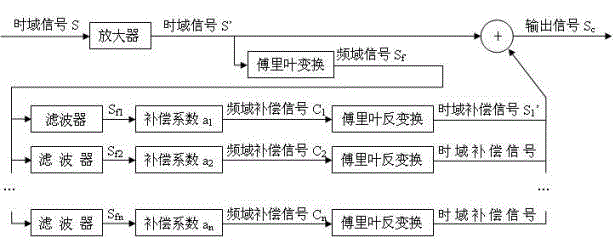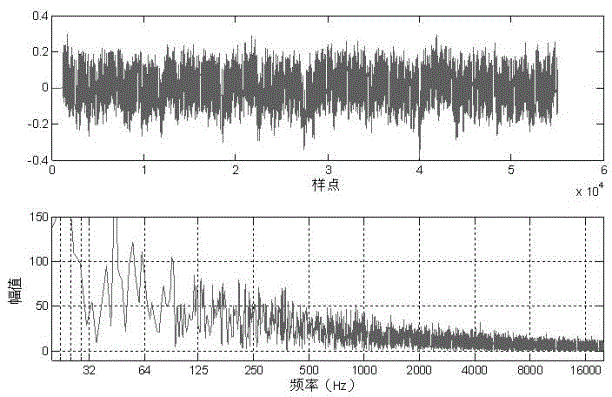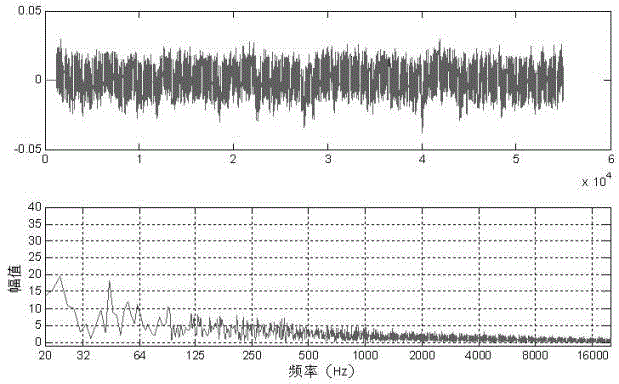Equal loudness contour based method for automatically recovering tone of voice signal according to volume adjustment
A technology of equal loudness curves and sound signals, applied in the field of digital signal processing, can solve problems such as active noise, timbre change, and sound quality deterioration
- Summary
- Abstract
- Description
- Claims
- Application Information
AI Technical Summary
Problems solved by technology
Method used
Image
Examples
Embodiment 1
[0041] see figure 1 , the present embodiment is based on the method of automatically restoring the timbre of the sound signal according to the volume adjustment based on the equal loudness curve. Compensate to achieve the purpose of restoring the sound quality; the specific operation steps are as follows:
[0042] (1) When controlling the volume, the generated gain variation △S acts on the time-domain signal S of the sound file to obtain the time-domain signal S' after gain; perform Fourier transform on this time-domain signal S', Get the frequency domain signal S f ;
[0043] (2) Use a digital filter to the frequency domain signal S f Perform filtering and divide it into several frequency domain signals;
[0044] (3) Quantitatively analyze the equal loudness curve to obtain the compensation coefficient of each frequency segment under the condition of different gain variation △S;
[0045] (4) Combined with the compensation coefficient, the compensation signal of each frequ...
Embodiment 2
[0048] The present embodiment is basically the same as the first embodiment and the special features are as follows:
[0049] The gain variation ΔS is a coefficient for multiplying the original signal to amplify or reduce the original signal.
[0050] The digital filter is an FIR bandpass filter.
[0051] The compensation signal is the product of each frequency domain signal and its respective compensation coefficient.
[0052] The realization of the compensation is finally completed by adding the time domain signal of the compensation signal to the time domain signal S'.
[0053] The amount of compensation is obtained through quantitative analysis of equal loudness curves. Its analysis steps are as follows:
[0054] (1) Each point h on an equal loudness curve is determined by the frequency f and the sound pressure level S, and the relationship can be obtained: h = G ( f, S ), h represents a certain point on the equal loudness curve A point, f represents the frequency, S r...
Embodiment 3
[0069] see Figure 1~Figure 4 , the present embodiment is based on the method of automatically restoring the timbre of the sound signal according to the volume adjustment based on the equal loudness curve, and the specific operations are as follows:
[0070] Preferred embodiments of the present invention are described in detail as follows in conjunction with accompanying drawings:
[0071] Suppose the loudness of the sound is adjusted from 80 fang to 60 fang, then the gain change △S is -20dB, and the time domain signal S' after gain is obtained.
[0072] In order to simplify the processing, take 31.5Hz~500 Hz as an example, divide it into 4 sections for compensation. They are: 31.5Hz~62.5Hz; 62.5Hz~125Hz; 125Hz~250Hz; 250Hz~500Hz. The time-domain signal S' is filtered through the fir digital filter to obtain the frequency-domain signals of these four frequency bands.
[0073] Next, take points for the equal loudness curve in ISO226. Divide the abscissa into 100 grids. In ...
PUM
 Login to View More
Login to View More Abstract
Description
Claims
Application Information
 Login to View More
Login to View More - R&D
- Intellectual Property
- Life Sciences
- Materials
- Tech Scout
- Unparalleled Data Quality
- Higher Quality Content
- 60% Fewer Hallucinations
Browse by: Latest US Patents, China's latest patents, Technical Efficacy Thesaurus, Application Domain, Technology Topic, Popular Technical Reports.
© 2025 PatSnap. All rights reserved.Legal|Privacy policy|Modern Slavery Act Transparency Statement|Sitemap|About US| Contact US: help@patsnap.com



